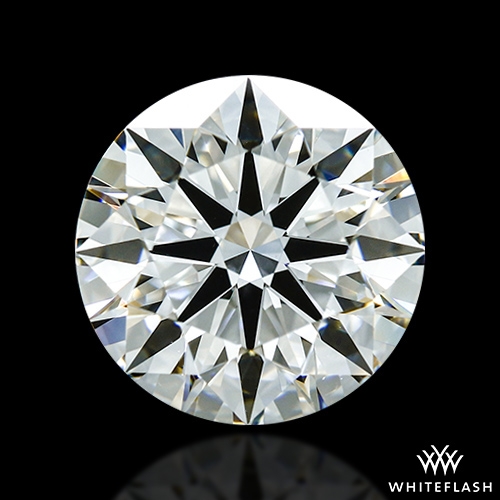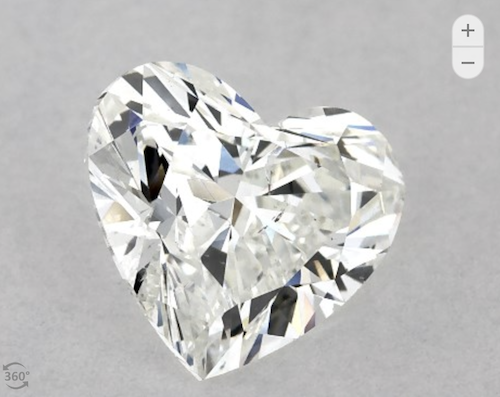Diamonds have long been cherished as symbols of wealth, power, and love. Yet, the advent of lab-grown diamonds has brought about a revolutionary shift in the industry. These scientific marvels raise thought-provoking questions on value, beauty, and sustainability, leaving many intrigued about lab-grown diamond pricing.
How do these lab-created diamonds stack up against their natural counterparts? Can they offer the same allure? What is their true worth? Is their cost more appealing?
In this comprehensive guide, we’ll explore these compelling questions, delving deep into the world of lab-grown diamonds. We aim to provide valuable insights for potential buyers, gem enthusiasts, and anyone keen on understanding lab-grown diamond pricing, its comparison to natural diamonds, and upcoming trends in this rapidly evolving industry. Get ready to embark on an enlightening journey into the future of gemology!
Summary:
- Understanding Lab-Created Diamonds
- Lab-Grown Diamond Pricing
- Natural Diamonds Vs. Lab-Created Diamonds: A Detailed Analysis
- The Value of Lab-Created Diamonds
- Cost Comparison: Lab-Grown and Natural Diamonds
- The Fairness Debate: Comparing Lab-Grown and Natural Diamonds
- Investing in Lab-Grown Diamonds
- The Future of Diamonds: Lab-Grown Vs. Natural
- Concluding Thoughts and Recommendations
Understanding Lab-Created Diamonds
Lab-grown diamonds, synonymous with lab-created or synthetic diamonds, are genuine diamonds crafted under controlled laboratory environments. They’re not fakes but carbon copies of natural diamonds. Here’s a quick breakdown to understand them better:
- What Are They? Lab-grown diamonds are real diamonds produced from tiny carbon seeds of pre-existing diamonds. They share the same physical, chemical, and optical properties as their natural counterparts.
- How Are They Made? Two primary methods are used: High-Pressure, High-Temperature (HPHT), and Chemical Vapor Deposition (CVD).
- HPHT: This method exposes a carbon source to extreme temperature and pressure, imitating the natural conditions that form a diamond in the Earth’s crust.
- CVD: This process places a diamond seed in a heated sealed chamber filled with a carbon-rich gas mixture. The gases break down, and the carbon atoms adhere to the diamond seed, gradually forming a diamond.
- Are They Identical to Natural Diamonds? From a scientific and gemological standpoint, lab-grown diamonds are virtually indistinguishable from natural diamonds. Both have carbon atoms arranged in a diamond cubic structure, giving them their hardness and brilliance.
- Why Choose Lab-Grown Diamonds? These diamonds are typically more affordable than natural diamonds, making them appealing to budget-conscious consumers.
- Challenges in Production: Despite their advantages, creating diamonds in a lab isn’t without hurdles. It demands considerable technological resources, energy, and time, varying based on the size and quality of the diamond produced.
Lab-Grown Diamond Pricing
When it comes to lab-grown diamonds, several economic factors come into play. Let’s break them down:
- Price Trend: The lab-grown diamond market is relatively new and dynamic. A noticeable trend is the declining price of these diamonds, likely due to improvements in production techniques and increased market competition.
- Cut Quality: Regardless of whether a diamond is mined or lab-created, the quality of its cut is critical. The cut impacts the diamond’s brilliance, fire, and scintillation, thereby affecting its overall beauty. Even with a falling price trend, a well-cut lab-grown diamond retains its value due to its enhanced aesthetics.
In summary, while lab-grown diamond pricing trends might be on a downward curve, the true value of these diamonds hinges on their cut quality. A carefully chosen diamond, known for its superior cut, will not only be economical but also extraordinarily beautiful.
Natural Diamonds Vs. Lab-Created Diamonds: A Detailed Analysis
The debate between natural and lab-created diamonds is a complex one. To help you navigate it, we’ve broken down the discussion into key comparative factors:
- Formation Process: Natural diamonds form over billions of years under high pressure and temperature conditions in the Earth’s mantle, then brought to the surface through volcanic activity. Lab-created diamonds, on the other hand, are grown in a matter of weeks in a lab using HPHT or CVD processes that replicate natural diamond formation conditions.
- Visual Appearance: Both lab-grown and natural diamonds possess the same physical, chemical, and optical properties. This makes them virtually indistinguishable to the naked eye and even under a jeweler’s loupe.
- Cut, Color, Clarity, and Carat: The 4Cs apply to both natural and lab-grown diamonds. They are graded on the same scale by gemological laboratories.
- Price: Lab-grown diamonds are considerably more affordable than natural diamonds of the same quality and size. This is due to the shorter supply chain and less resource-intensive production process.
- Value Retention: Natural diamonds often hold their value over time and can sometimes appreciate, making them a favored choice for investment. Lab-grown diamonds, however, are still a new market, and their value retention or appreciation over time is yet to be established.
- Sentimental and Symbolic Value: Some buyers may prefer natural diamonds for their symbolic significance and the allure of owning a piece of Earth’s history. Others may lean towards lab-grown diamonds for their modernity, sustainability, and affordability.
In conclusion, both natural and lab-grown diamonds have their unique attributes and appeal. Your choice between the two will depend on personal preferences, values, and budget considerations.
The Value of Lab-Created Diamonds
Understanding the value of lab-created diamonds involves looking beyond just their pricing. Here’s a detailed exploration:
- Affordability: Lab-grown diamonds cost far less than natural diamonds of equivalent size and quality. This affordability makes high-quality diamonds more accessible.
- Quality: Lab-grown diamonds can be crafted to high quality, matching their natural counterparts. They can possess excellent color, clarity, and cut grades. Specifically, the cut grade is crucial, with some lab diamonds being precision cut to exhibit superior light performance and sparkle.
- Innovation: The creation of lab-grown diamonds represents innovative technological advancements in gemology. They symbolize the marriage of science and luxury.
- Brand-Specific Offerings: Various vendors offer lab-created diamonds, but certain brands stand out with their offerings. The Precision Lab Diamonds from Whiteflash, a well-respected brand, offer superior cut quality. These diamonds are meticulously crafted to ensure exceptional light performance and aesthetic appeal, reinforcing the value of their lab-grown diamonds.
In contrast, James Allen, Brilliant Earth and Blue Nile offer a wide variety of lab-grown diamonds, making them ideal for consumers seeking a broad selection.
Ultimately, the value of a lab-created diamond extends beyond its price tag. It represents an amalgamation of quality, ethical sourcing, innovation, and the expertise of the brand crafting it.
Cost Comparison: Lab-Grown and Natural Diamonds
The innovation of lab-grown diamonds has provided more choices for diamond shoppers. They bear an uncanny resemblance to natural diamonds, yet cost significantly less.
Key points to consider:
- Lab-grown and natural diamonds: While physically and optically identical, these two types of diamonds have a significant cost difference. Natural diamonds can be approximately 80% more expensive.
- Reasons for cost difference: The price disparity stems from the labor-intensive process of mining, cutting, and processing natural diamonds. Lab-grown diamonds, however, are produced more efficiently in controlled environments.
- Impact on purchasing decision: The cost variance can significantly affect your buying choices. Opting for a lab-grown diamond can free up your budget, allowing you to splurge on other aspects like the setting.
- Emotional factors: The charm of a natural diamond, formed over billions of years, holds sentimental value for some. Thus, it’s important to ask, “Would owning a lab-grown diamond concern me?”
The decision between lab-grown and natural diamonds relies on several factors like budget, style preferences, and emotional considerations. Both options offer unique advantages, and regardless of your choice, you can create a remarkable piece of jewelry to treasure.
The Fairness Debate: Comparing Lab-Grown and Natural Diamonds
Comparing lab-grown and natural diamonds is a contentious issue that raises the question of fairness. Let’s delve into the key points of this debate:
Apples to Apples?: The first question in this debate is whether comparing lab-grown and natural diamonds is an “apples to apples” comparison. Despite their identical chemical composition and physical properties, the two have different origins—one created over billions of years beneath the earth’s surface, the other manufactured in a lab over a few weeks.
Value Perception: The value of diamonds extends beyond their physical characteristics. Natural diamonds carry a perception of rarity and a piece of the earth’s history, while lab-grown diamonds represent technological advancement, sustainability, and affordability.
Price Vs. Value: While lab-grown diamonds are generally less expensive than natural diamonds, the perceived value may differ among buyers. Some may see value in the age and natural formation of mined diamonds, while others may value the ethics, environmental impact, and innovation of lab-created diamonds.
Market Dynamics: Natural and lab-grown diamonds have different market dynamics. Natural diamonds have a long-standing market with established resale and value retention patterns, while the lab-grown diamond market is still new, with price and resale value trends yet to be fully established.
In conclusion, comparing lab-grown diamonds with natural diamonds isn’t a simple task. Each has its unique set of attributes and appeal, and the choice between the two often boils down to personal preferences and values. The fairness of the comparison, therefore, is subjective and depends largely on what one values most in a diamond.
Investing in Lab-Grown Diamonds
When considering investing in lab-grown diamonds, it’s crucial to understand the unique dynamics of this relatively new market. Here are some key factors:
- Market Maturity: Lab-grown diamonds are still a developing market, and as such, price and value retention trends over time are yet to be established. Currently, these diamonds tend to depreciate faster than natural diamonds.
- Quality and Cut: Despite the difference in value retention, the quality of lab-grown diamonds can be on par with their natural counterparts. Particularly, the cut of a diamond is critical to its overall brilliance and visual appeal.
- Brand Considerations: Purchasing lab-grown diamonds from reputable brands like Whiteflash, with their renowned Precision Lab Diamonds, ensures you’re getting a quality product. However, a brand name may not significantly impact the investment potential of a lab-grown diamond.
- Resale Potential: Unlike the mature market for natural diamonds, the resale market for lab-grown diamonds is still evolving and may not yield high returns at this point in time.
So, are lab-grown diamonds a good investment? Given the current market conditions, they may not offer the best value retention compared to natural diamonds. However, it’s important to note that even natural diamonds can depreciate, albeit not as quickly.
While lab-grown diamonds may not be the ideal choice for financial investment, they offer a unique blend of affordability, ethical sourcing, and technological innovation that may align well with your personal values and aesthetic preferences. If your ‘investment’ is more about owning a beautiful gemstone without contributing to environmental harm, lab-grown diamonds could be an excellent choice for you.
The Future of Diamonds: Lab-Grown Vs. Natural
Predicting the future of diamonds involves diving into the complex and ever-evolving world of gemology and market dynamics. Here’s our take on it:
- Trends and Technology: Lab-grown diamonds have seen a surge in popularity due to their affordability, sustainability, and ethical sourcing. As technology improves, lab-grown diamonds will likely become even more cost-effective and accessible. However, it’s uncertain how these advancements will affect their value and desirability in the long run.
- A Race to the Bottom?: With increased production and competition, some wonder if the future of lab-grown diamonds is a ‘race to the bottom’ in terms of pricing. As lab-grown diamonds become more commoditized, their pricing could potentially become a purely cost-plus proposition, which could erode their perceived value over time.
- Natural Diamonds: While lab-grown diamonds have certainly shaken up the market, natural diamonds still have a solid foothold. The rarity, historical allure, and perceived value of natural diamonds may help them retain their appeal and value, even in the face of increasing lab-grown diamond production.
- Consumer Preferences: Ultimately, the future of diamonds, both lab-grown and natural, will largely depend on consumer preferences. Some buyers might prefer the affordability and ethical production of lab-grown diamonds, while others might continue to be drawn to the rarity and timelessness of natural diamonds.
In summary, the future of diamonds, both lab-grown and natural, is dynamic and uncertain. Both have their unique strengths and appeals, and their respective futures will likely be shaped by a mix of technological advancements, market dynamics, and evolving consumer preferences. Regardless of the path they take, one thing remains clear: diamonds, in whatever form, will continue to captivate us with their brilliance and beauty.
Concluding Thoughts and Recommendations
Navigating the world of diamonds is an intricate journey. The rise of lab-grown diamonds offers a unique blend of affordability, sustainability, and ethical production, while natural diamonds maintain their charm through rarity, history, and timelessness.
Ultimately, the choice between lab-grown and natural diamonds depends on personal values, budget, and preferences. If you prioritize ethical sourcing and sustainability, consider lab-grown diamonds. If rarity, natural formation, and history speak to you, natural diamonds might be your pick.
We foresee a future where both lab-grown and natural diamonds coexist, each catering to different buyer needs.
Remember, the true value of a diamond lies in the joy it brings and the memories it symbolizes. Happy diamond hunting!

Richard Jenkins, The Diamond Guru
Get free assistance from the Diamond Guru today. You’ll be glad you did!
- Secure the best quality diamond for your budget.
- Don’t pay over the odds for your diamond ring.
- Have peace of mind that you didn’t get ripped off.
Have a Question? Contact us now…



